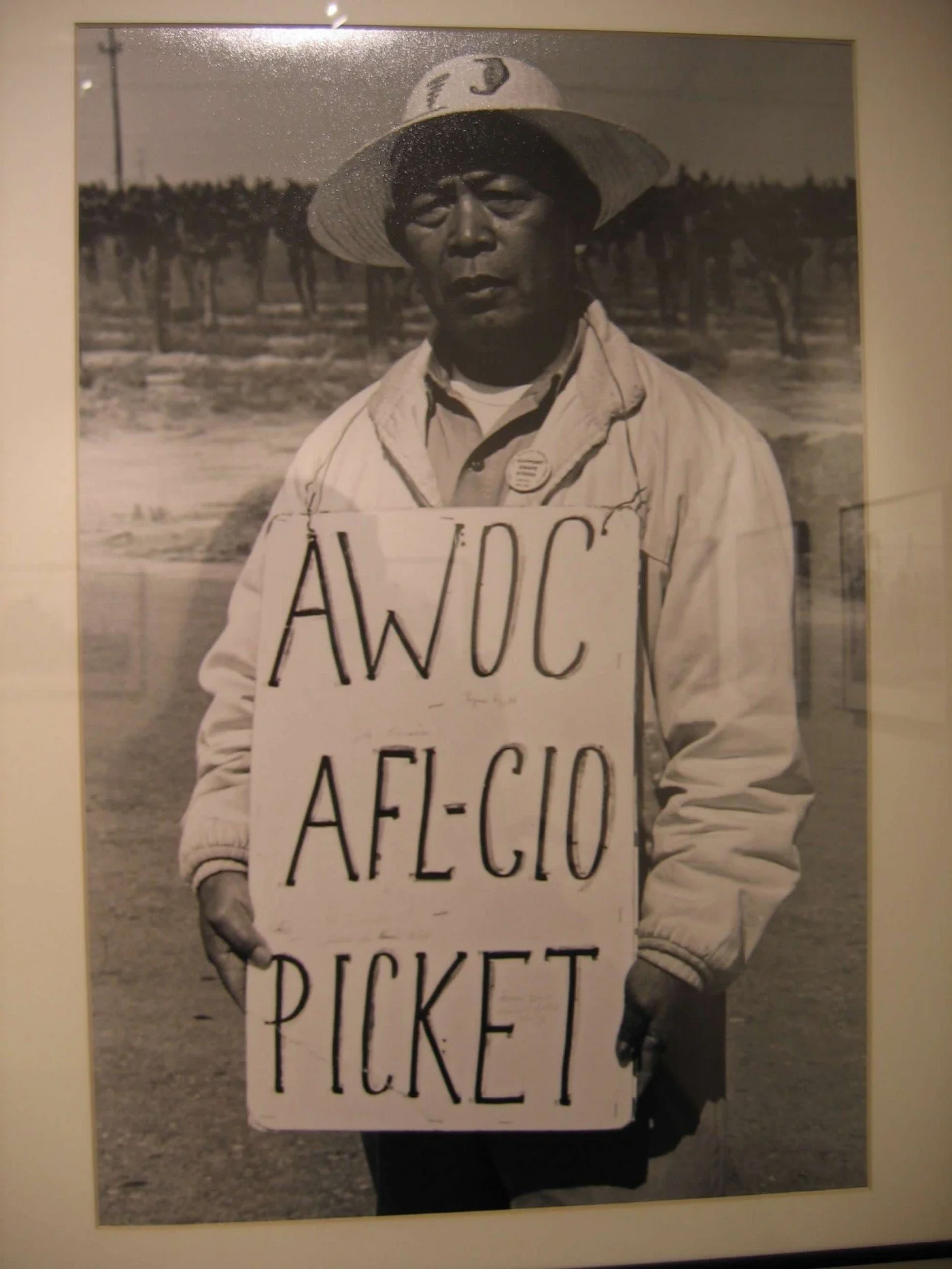Delano Grape Strike: Keeping the Manongs’ Story Alive
September 8, 2020
Every year around this time, I think about the story that has had a profound impact in my career.
This story took me months to research and report out. Originally it was slated to be a Sunday A1 centerpiece (a prized and prominent position for any story in print) but Hurricane Katrina also rolled through the same weekend. But my story still made column 1, which is still a prime spot on the front page.
Today, September 8, marks the 55th anniversary of the Delano Grape Strike started by AWOC, AFL-CIO (Agricultural Workers Organizing Committee), comprised of Filipino workers.
What most folks don’t know is that a smaller strike in Riverside County was the inspiration for Delano — which is where I had the opportunity to tell that story as a reporter for the Press-Enterprise.
Even prior to striking in Delano, AWOC led by Larry Itliong, held a strike in the Coachella Valley on May 3, 1965.
By the end, nearly 1,000 workers joined the strike. They got their raise, but there was no contract between them and the growers, according to newspaper accounts.
After the success in Coachella, many of the same Filipinos moved north to Delano, where the grape-picking season begins in September. They asked for the same hourly rate they received in Coachella but were turned down.
Itliong and Filipino leaders Philip Vera Cruz and Pete Velasco assembled their membership and voted to start a Delano strike on Sept. 8, 1965.
In reporting this story out, I traveled to La Paz and Delano with Marissa Pulido Rebaya andMark Pulido. I had the opportunity to meet and interview Cesar Chavez’s son Paul and Manong Pete Velasco’s widow Manang Dolores who kept the memory and stories alive of the FilIpino workers.
At the time, the news hook was it was the 40th anniversary of the Delano strike. Now, 15 years later, we are still fighting for our visibility in past, present and in the future.
It is a reminder how important it is to remember these stories and teach the next generation of our community’s legacy.
Why does it matter?
The most striking thing I’ll never forget about this story is its impact. A few days after the story ran, I received a snail mail letter from a young student wanting to know more about the Filipinos involved in the strike. This student, who was Latina, was writing a report about Cesar Chavez but was also looking to add more to her report about the Filipinos involved but couldn’t find much information — this is why our stories matter, not just for our community but for the larger fabric of American history and our contribution to it.
We cannot let this legacy disappear.
The original link to my story is no longer on the Press-Enterprise website, but below is a link to the full text — published on Sept 4, 2005:
On Labor Day, September 7, 2020, Mark Pulido, Gloria Pulido and Marissa Pulido Rebaya, organized a virtual celebration which featured some OGs of the community to remember this anniversary. It was moving to hear the dedication of these men to what they believed to be right and the community’s efforts to keep their legacy alive after 55 years.
The work continues and carries on with the next generation.
